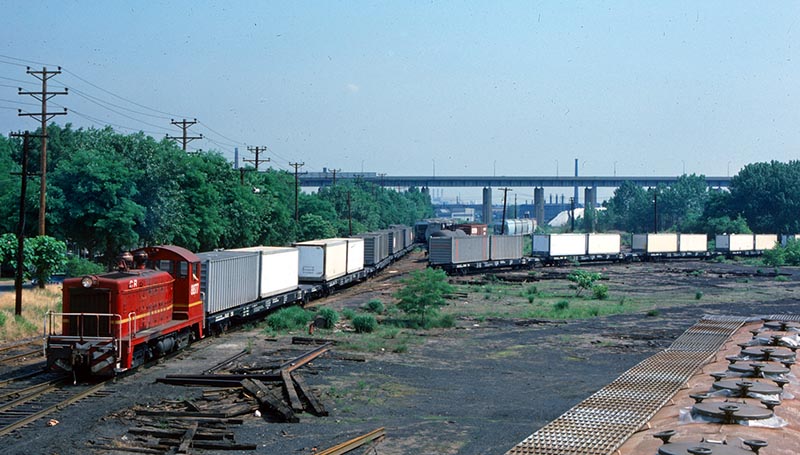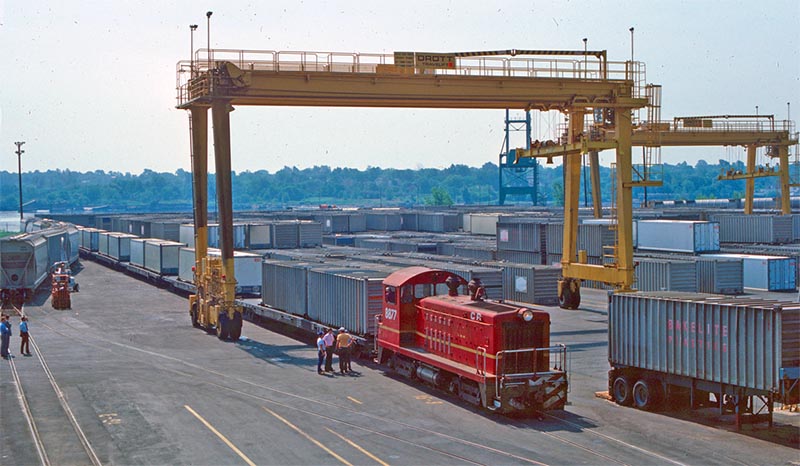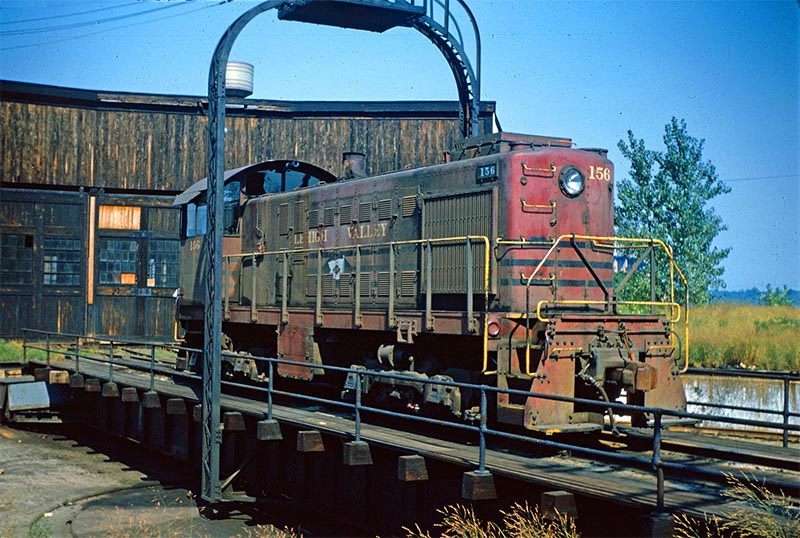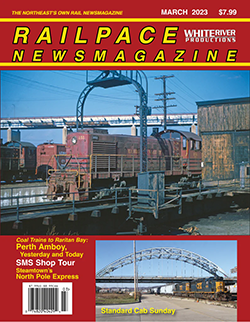It may be difficult to believe, but the remaining mile of Conrail Shared Assets trackage west of WOOD interlocking along the NJ Transit North Jersey Coast Line in Perth Amboy, N.J., was once a busy terminal of the Lehigh Valley Railroad. Although service to the one remaining customer, Kinder-Morgan, is provided “as needed,” a little history is in order.
The Delaware, Lehigh, Schuylkill & Susquehanna Railroad was incorporated April 21, 1846, becoming the Lehigh Valley Railroad on January 7, 1853. Its formative years were focused on reaching Easton, Pennsylvania and Phillipsburg, New Jersey as an outlet for its primary traffic, anthracite coal, relying on friendly connections there to move the coal to final destinations.
The situation changed quickly when the Delaware, Lackawanna & Western Railroad purchased the Morris & Essex Railroad in 1868, and the Central Railroad of New Jersey leased the Lehigh & Susquehanna Railroad in 1871, which paralleled the Lehigh Valley in Pennsylvania. It was then that the Lehigh Valley set its sights eastward, leasing the Morris Canal in1871; not to operate it, but to obtain harbor real estate in Jersey City, New Jersey.

ABOVE: Conrail SW7 8877 (ex-LV 222) drills Union Carbide van boxes on flat cars in the Perth Amboy yard. The Outerbridge Crossing to Staten Island stands in the background in this view looking north June 13, 1977. —Tom Nemeth
Lehigh Valley then acquired a “paper railroad”, the Perth Amboy & Bound Brook, allowing access to a different waterfront on Raritan Bay. The road then incorporated the Bound Brook & Easton, combining both as the Easton & Amboy Railroad on April 3, 1872. Construction began immediately but was slowed by the Panic of 1873 and the challenging construction of the 4,800 foot long Musconetcong Tunnel in western New Jersey.
As its purpose was the haulage of anthracite coal, the E&A ran its first coal train from Phillipsburg to Perth Amboy on May 28, 1875. The consist of 125 wooden six-ton capacity cars was hauled by one locomotive with assistance by another locomotive to Musconetcong Tunnel, the sixty-mile trip across New Jersey taking under seven hours. Built as double-track, the route was officially opened on June 28, 1875 formally becoming the New Jersey Division of the Lehigh Valley Railroad.

ABOVE: The Conrail drill crew has placed the cut of van boxes on flat cars beneath one of the two Drott Travelift overhead cranes to be unloaded June 13, 1977. —Tom Nemeth
By the end of 1876, three trestles were constructed in Perth Amboy for the handling of coal for local and coastal customers by schooners, and later by tugs and barges. Also constructed was a turntable and 20-stall roundhouse, coaling station, car shop, and related steam servicing facilities, a general office for dispatchers, agents, and clerical staff, freight station, and a bunkhouse for road crews.
The first Lehigh Valley timetable was published June 28, 1875 and passenger trains immediately began the long tradition of using a portion of the PRR to access the New York City market, with the initial connection being from the Perth Amboy main line at Metuchen, New Jersey.
To gain better access to the New York market for both passenger and freight, in 1887 the LVRR built its own line east from South Plainfield, and through construction and acquisitions reached its goal of Jersey City in 1891. Thus ended the scheduled Metuchen passenger connection, the stonework of which can still be seen today. Passenger service continued to Perth Amboy with connections to mainline trains at South Plainfield; the last schedule was one round-trip operated by motor car between Jersey City and Perth Amboy, which ended during the Depression on August 3, 1934…



